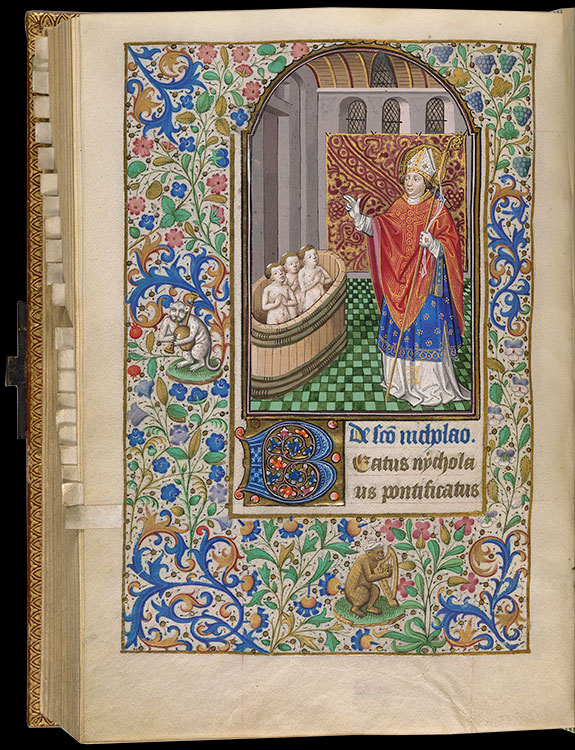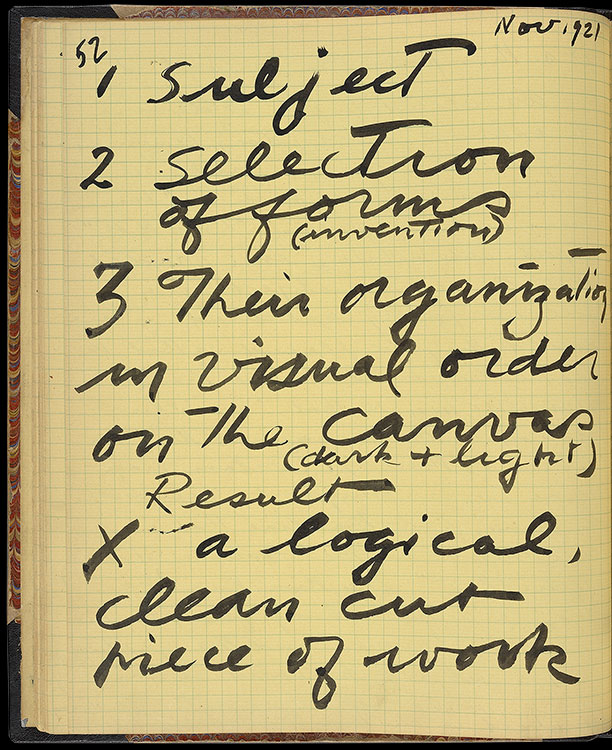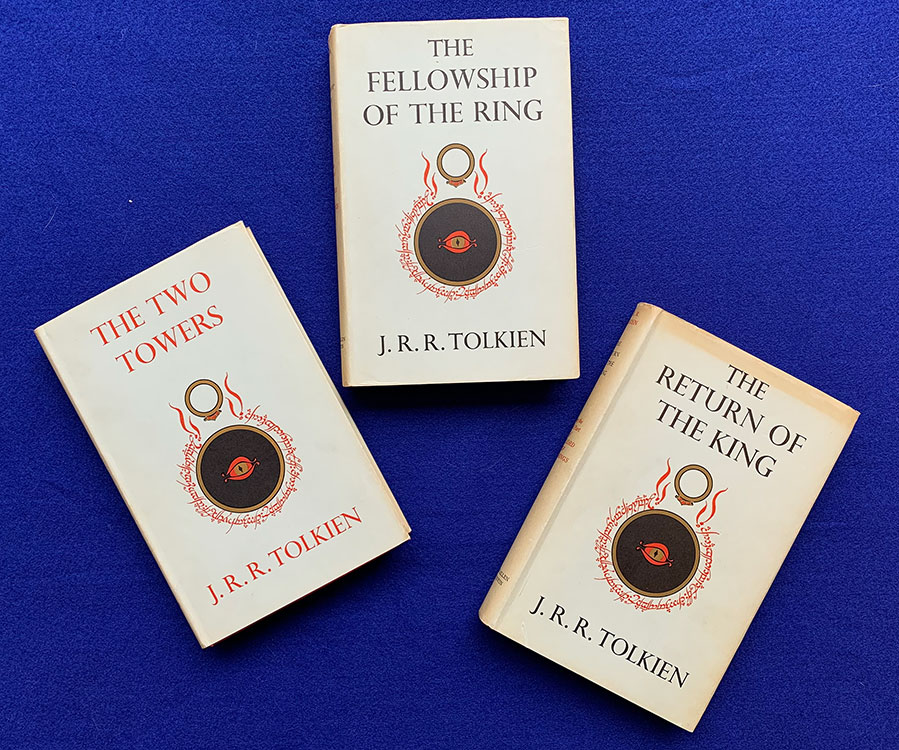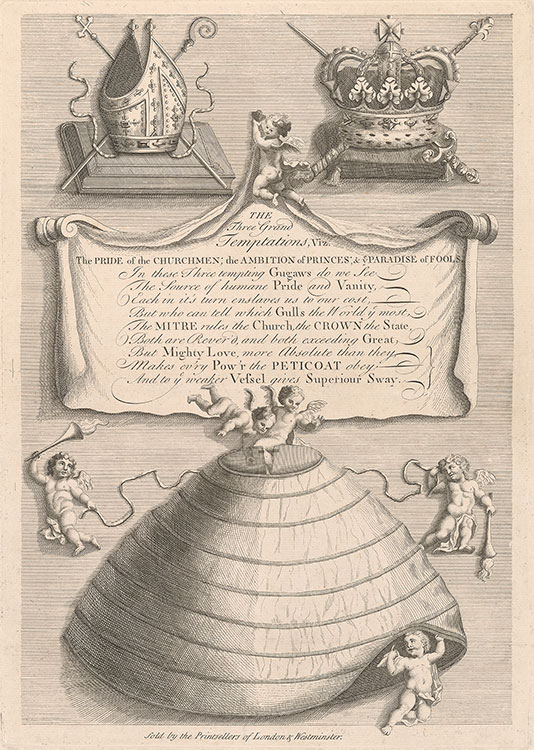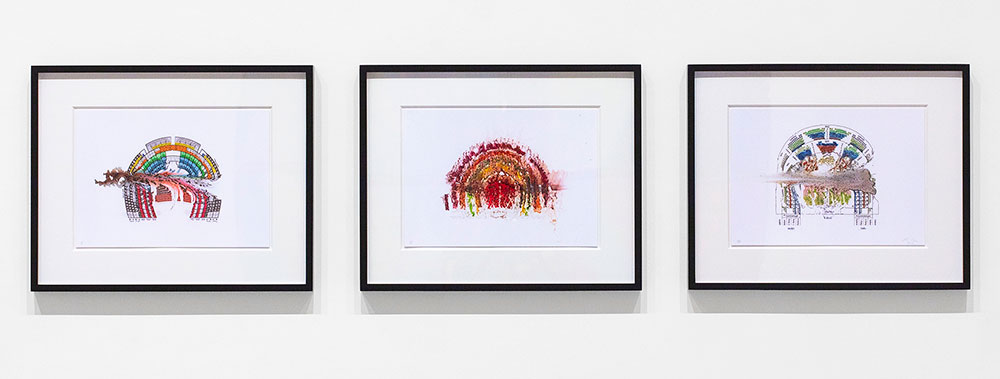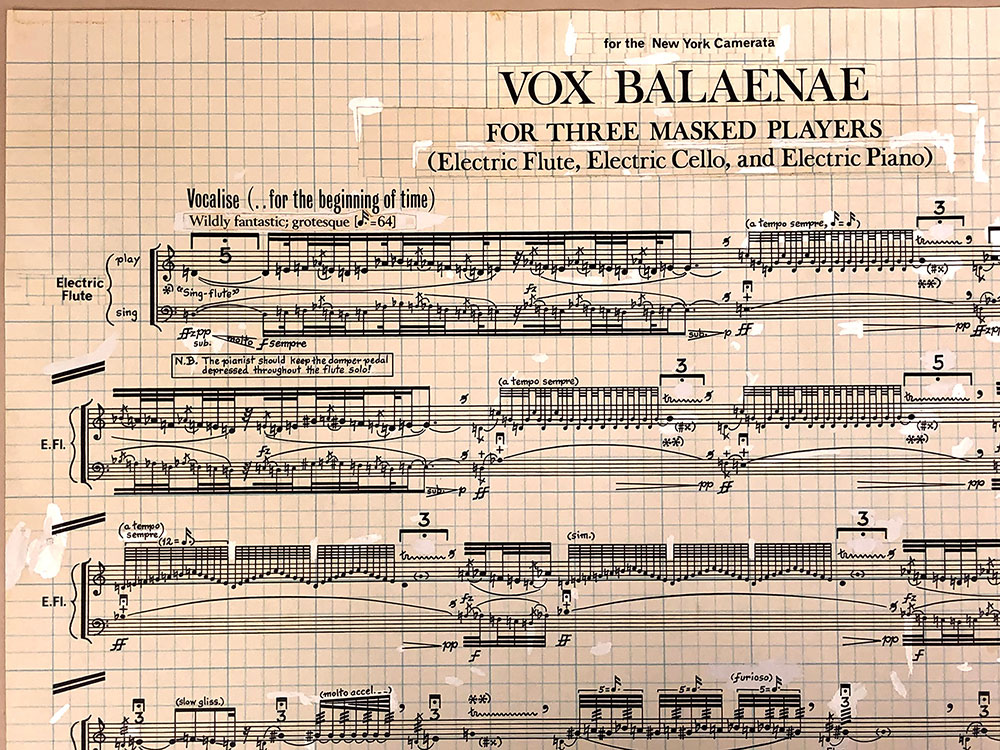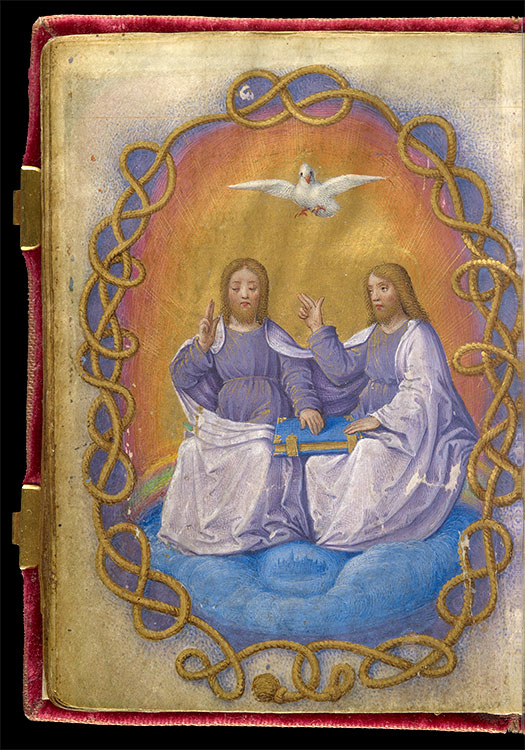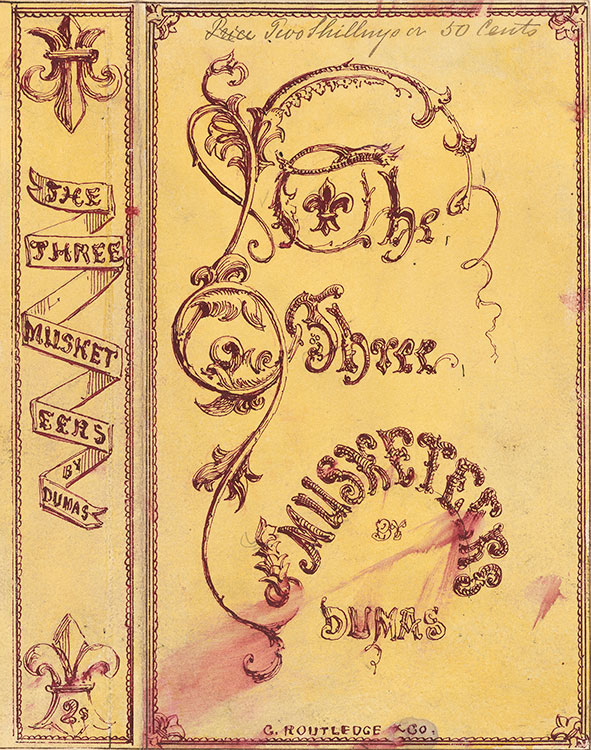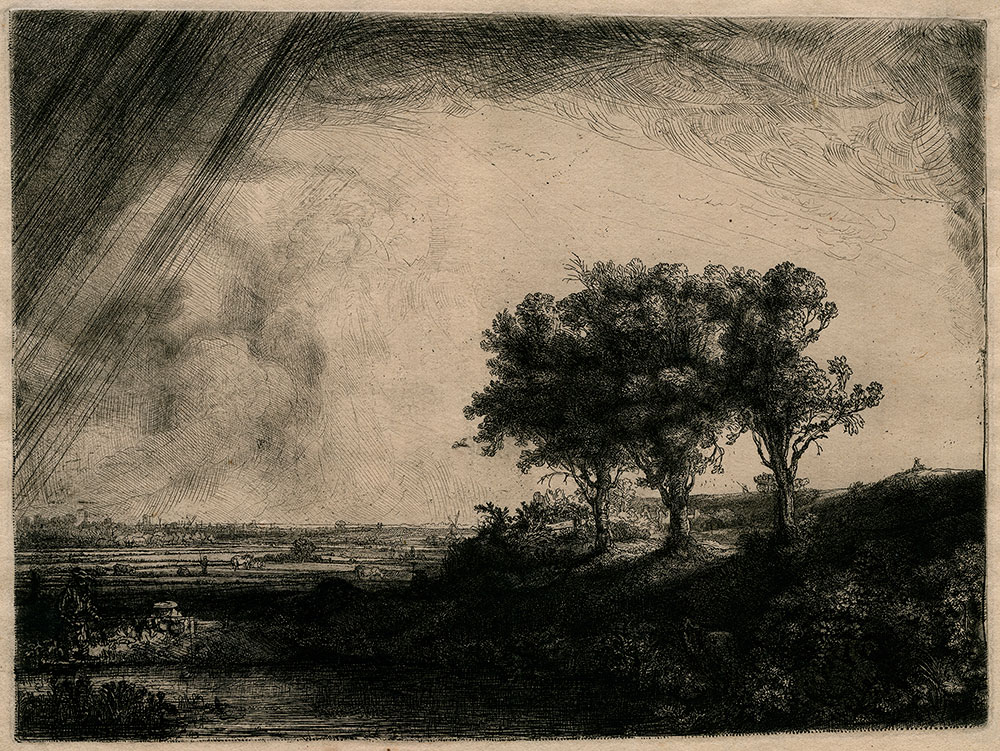Morganmobile: Threes
For creatures who see through two eyes, walk on two feet, and reach out with two hands, threes hold the distinct appeal of something fuller, rounded: three-dimensional. Trios, triptychs, trinities, and trilogies productively complicate matters. A third option spells the end of simple choices between This or That. Three points toward plurality, multiplicity, and the beguiling possibilities of the infinite.
Morganmobile: Threes
According to pious legend, Saint Nicholas provided dowries for three impoverished girls, saved three innocent men from execution, and, as seen here, resurrected three schoolboys. The boys had taken shelter with a wicked innkeeper, who murdered them, chopped them into pieces, and pickled their tender flesh. Prompted by a vision, Nicholas exposed the crime. He visited the inn and ordered a portion of cured meat. Standing before the vat, he made the sign of the cross, causing the fully restored trio to emerge.
Book of Hours, France, Paris, ca. 1460, MS M.282, fol. 133v. Purchased by J. Pierpont Morgan in 1907.
Morganmobile: Threes
In late 1921, when he was about to turn twenty-nine, Stuart Davis made this list of three variables a painter must address when facing a blank canvas: subject, forms, and visual organization. Their effective resolution will result in a “logical, clean cut piece of work.” Failure, as Davis reminded himself, carried consequences: “The experience of getting a picture almost completed and then being left with an undesirable space is a soul-destroying ordeal.” (Davis’s complete diary for 1920–22—with its many numbered lists—is available here.)
Stuart Davis (1892–1964), autograph manuscript diary, May 1920–28, November 1922. Purchased on the Young Associates Fund; MA 5062. © Stuart Davis / Artists Rights Society (ARS), New York.
Morganmobile: Threes
Many of Paolo Veronese’s drawings feature multiple studies of a given motif in his paintings. This example can be related to several paintings of the Finding of Moses that the artist executed in the early 1580s. It includes three variant studies for Pharaoh’s daughter and the attendant standing beside her—along with a drapery study, a distant landscape, and five studies for the kneeling attendant who presents the infant Moses.
Paolo Veronese (1528–1588), Studies for the Finding of Moses, ca. 1580. Pen and brown ink and wash, 6 3/4 x 7 3/8 in. (171 x 186 mm). Purchased by Pierpont Morgan in 1909, IV, 81.
Morganmobile: Threes
For J. R. R. Tolkien, The Lord of the Rings was not a trilogy. The much-anticipated follow-up to The Hobbit was supposed to be another work for children. After waiting twelve years, the publisher received something else. The Lord of the Rings ran to over 1,000 pages, an unprecedented length for fantasy literature at that time. The publisher, Rayner Unwin, who had convinced his father to publish The Hobbit, questioned whether readers would buy such a long novel. Due to high production costs and an uncertain market, the work was divided into three parts for publication.
J. R. R. Tolkien (1892–1973), The Lord of the Rings, 3 vols, London: George Allen & Unwin, Ltd., 1954–55. Purchased on the Elisabeth Ball Fund, 1988; PML 85924–26.
Morganmobile: Threes
Throughout the making of this triple exposure, the camera, and the film inside it, stayed put. Before each opening of the shutter, the two sitters repositioned themselves, occupying each of the three rooms in turn. A lantern accompanied them, so that at each exposure, only one room—the inhabited one—imparted detail to the negative. Photography’s century-long rise to the status of fine art owed much to the experiments of avid amateurs. Guided by odd inspirations, hobbyists broke the medium down and reassembled it, often in ways the equipment manufacturers had never intended.
Unknown Photographer, Untitled (triple exposure), ca. 1910. Gelatin silver print mounted on board. Purchased on the Photography Acquisition Fund, 2019.65.
Morganmobile: Threes
This eighteenth-century satirical print proposes a contest among types of authority. Which one has the greatest power to tempt man: religion, monarchy, or the “paradise of fools”? Church and State, represented by the mitre and crown, are dwarfed by a massive petticoat that stands for Woman—described in the text as the “weaker Vessel.” Although the author refers to all three as Gugaws (geegaws, showy trifles), the petticoat is deemed to have “Superiour [sic] Sway.” Even the winged putti find themselves drawn to look under its hem.
The Three Grand Temptations, viz. The Pride of the Churchmen; the Ambition of Princes; & the Paradise of Fools, [London; Westminster]: Sold by the Printsellers of London & Westminster, [ca. 1721]. Bequest of Gordon N. Ray, 1987; PML 145850.29.
Morganmobile: Threes
In this triptych, Guillermo Kuitca takes as his subject the seating plans of three renowned theaters: Teatro La Fenice, Venice; Teatro Colón, Buenos Aires; and the Wiener Staatsoper, Vienna. Using water to break down the emulsion on the surface of the printed paper, he recasts these staid utilitarian documents as sites of chance and disorder. They are as colorful, unpredictable, and turbulent as the performances that occur within the theaters.
Guillermo Kuitca (b. 1961), Horseshoe Theaters, 2018. Printer’s ink on photographic paper, triptych, each 11 3/4 x 16 1/2 in. (29.8 x 41.9 cm). Gift of an anonymous donor; 2019.94.a–c. © Guillermo Kuitca, courtesy Sperone Westwater, New York.
Morganmobile: Threes
George Crumb wrote this manuscript so that a photographic facsimile (which does not reproduce the blue grid lines and white correction fluid) could serve as the published score. “Voice of the Whale,” for three masked players, is infused with threes. Its eight movements unfold in three sections; the middle one is a set of variations that employ three distinct variation procedures. At the opening of the first movement, seen here, the flutist sings into the instrument while playing. The two sounds unite to evoke a third: the voice of a humpback whale, a recording of which inspired Crumb when he heard it in 1969.
George Crumb (b. 1929), Vox Balaenae, autograph manuscript, 1971. Gift of Howard Phipps, Jr., 1978. The Morgan Library & Museum, Department of Music Manuscripts and Printed Music. © 1972 by C.F. Peters Corporation.
Morganmobile: Threes
In this unusual Trinity, Christ, seated at left, is in his pre-Incarnate state—he has no wounds. Raising his right hand, he places his left on the large book that God the Father nudges toward him. He is promising to fulfill his father’s decision to redeem humankind: he will descend to earth, assume flesh, and be crucified. Encircling the Trinity is a loopy cordelière, an emblem of King François I that references the knotted-rope belt worn by Franciscans. The emblem appears here at the command of the manuscript’s patron, the king’s teenage queen, Claude de France. Having given birth to two daughters, she commissioned this image as a painted prayer, beseeching God to grant François a son—the next king of France—just as He had given his own Son as redeemer to the world.
Trinity, Prayer Book of Claude de France, France, Tours, ca. 1517, illuminated, by the Master of Claude de France, MS M.1166, fol. 24v. Gift of Mrs. Alexandre P. Rosenberg in memory of her husband Alexandre Paul Rosenberg, 2008.
Morganmobile: Threes
At first glance, the stags in this seal appear identically carved. However, the first animal’s forelegs and rear legs are more widely separated than those of the second, while the four legs of the third stag are evenly spaced. These subtle distinctions allow the carver to impart an overall sense of forward motion, while the majestic horns of the stags create a remarkable design across the top of the seal. The combination of implied movement and elegant stylization attests to the artistic vision of seal carvers in the earliest periods of Mesopotamian art.
Ancient cylinder seal with modern impression: Three Stags with a Plant, Mesopotamia, Late Uruk/Jamdat Nasr period (ca. 3500–2900 B.C.). Serpentine, 1 x 7/8 in. (2.5 x 2,2 cm), Morgan Seal 20. Acquired by Pierpont Morgan sometime between 1885 and 1908.
Morganmobile: Threes
Alexandre Dumas’s novels, first serialized in periodicals and then issued as books, created a sensation in France and were soon translated into English. By the early 1850s, titles such as The Three Musketeers (1844), The Count of Monte Cristo (1844–45), and The Black Tulip (1850) were published in London as yellow-backs: cheaply produced paperback editions of popular novels, identifiable by the color of their covers. Yellow-backs, vying for market share against penny-dreadfuls, were available for a shilling or two in places such as W. H. Smith’s railway bookstalls. They provided inexpensive, compelling page-turners for an avid reading public on rail journeys. This cover for an early yellow-back was designed by Alfred Crowquill (1804–1872), a popular and prolific English writer and illustrator.
Alfred Crowquill (1804–1872), cover design for The Three Musketeers, ca. 1850s. Bequest of Gordon N. Ray, 1987.
Morganmobile: Threes
Starkly outlined against a patch of clear sky, Rembrandt’s three trees appear solid and motionless—in contrast to the meteorological drama unfolding on the left side of the composition. They have often been seen as evoking the three crosses of the Crucifixion, thus imbuing the landscape with biblical connotations. This somber reading, however, is undermined—or complicated, at least—by the lively quotidian activities that animate the scene: a couple fishing beside the river at left, farmers in the field, and two barely visible lovers hidden in the darkened bushes in the right foreground.
Rembrandt van Rijn (1606–1669), The Three Trees, 1643. Etching, engraving, and drypoint, 213 x 279 mm. Purchased by J. Pierpont Morgan in 1905, RvR 300.
